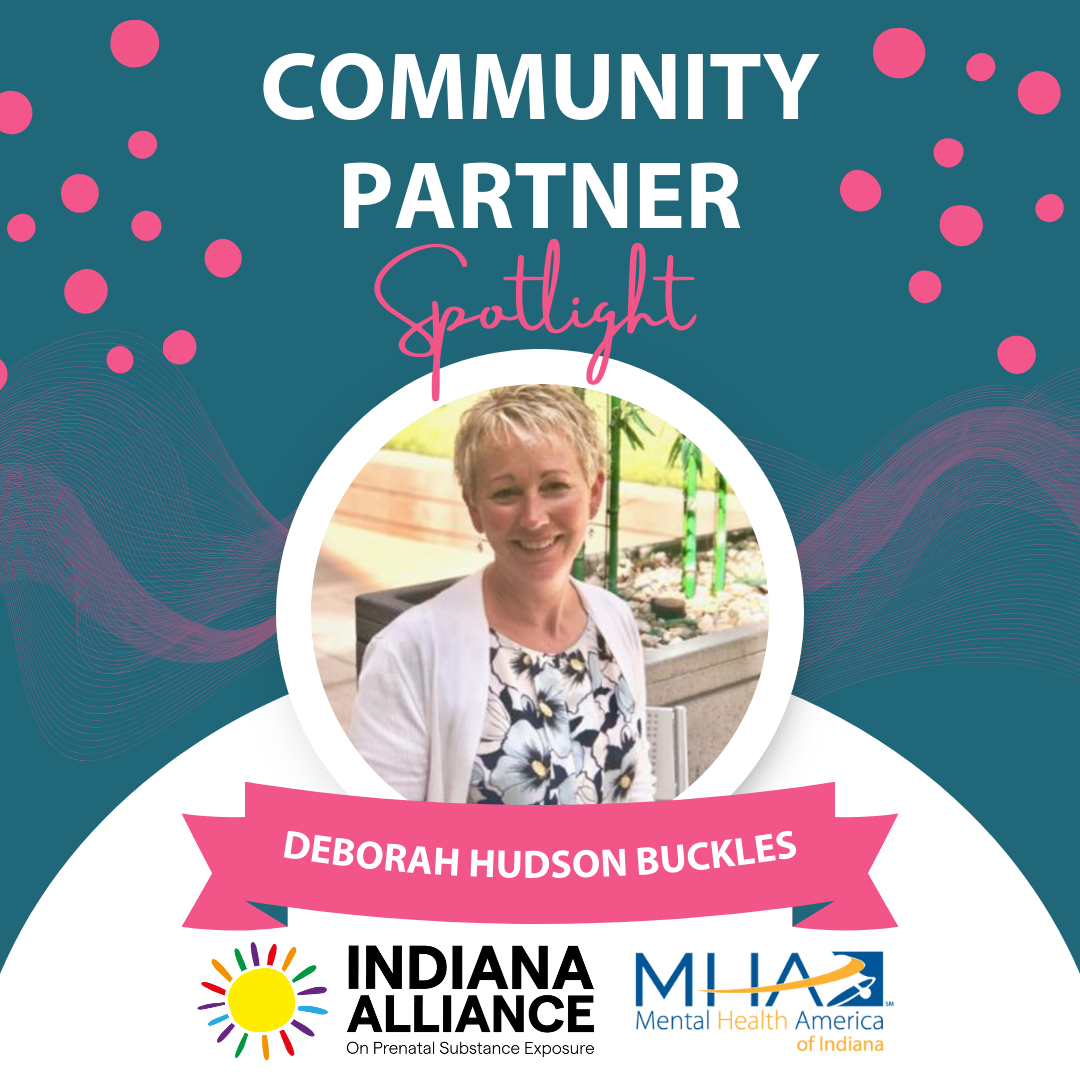Another side effect of the Canadian opioid crisis is now affecting neonatal wards around the country, as hospitalization rates for babies born with neonatal abstinence syndrome (NAS) after being exposed to opioids in the womb have risen significantly over the past five years.
Statistics from the Canadian Institute of Health Information (CIHI) show that the total number of NAS hospitalizations in Canadian provinces increased by almost 30% between 2013 and 2017 (this data excludes Quebec and the territories, where statistics are unavailable). Ontario is experiencing the bulk of these numbers, as between April of 2016 and March of 2017, more than half of the country’s NAS hospitalizations occurred in that province. Sarah Simpson, a registered social worker who’s worked for 20 years at the Special Care Nursery at St. Joseph’s Hospital in Hamilton, Ontario, has noticed a distinct rise in infants suffering from NAS and believes that it is directly related to the opioid crisis currently afflicting the country.
“It’s worrisome,” she said. “It seems that it certainly has increased a great number over the last couple of years. A couple of weeks ago we had seven babies in our 15-bed NICU who were on medication treatment for neonatal abstinence syndrome, which is almost half of our unit.”
Noticing a rise in “socially-complex” pregnancies that involve drug use and stem from living in poverty, Dr. Georgia Hunt, a perinatal addiction specialist at the Fir Square Combined Maternity Care Unit at the B.C. Women’s Hospital in Vancouver’s Downtown Eastside, has said “We’re very, very busy … Maybe busier than we ever have been.”
In B.C. and Alberta, the number of hospitalizations for NAS has increased annually since 2012, with the rates in Alberta nearly doubling in five years. After diagnosis, infants with NAS are treated with small amounts of morphine until they’re weaned off the opioid and are no longer dependent. While long term impacts of NAS are still under investigation, short-term risks can be dangerous if the child is not treated correctly and subsequently suffers from severe dehydration or seizures.
According to Dr. Hunt, this morphine treatment can take one to two weeks, or even longer. Diagnosing NAS can also be difficult, as though medical professionals strive to create safe places of recovery for new mothers who have used opioids during pregnancy, they may not want to admit their use of opioids while pregnant and thus open themselves to potential intervention from child protective services or community judgment.
“[We tell them] we are here [at St. Joseph’s] to support them through whatever struggles they’ve had in the past or are currently working through and that we are not here to judge them by any means,” Simpson has said.
As the opioid crisis progresses, it is becoming increasingly clear that to curb the rising rates of side effects like NAS, the overall use of opioids across the country must be drastically reduced. According to the federal government, there were 2,800 apparent opioid-related deaths in 2016, a number expected to have surpassed 3,000 in 2017. In November, Minister of Health Ginette Petitpas Taylor announced national initiatives to combat this “national public health crisis,” including allowing provinces to open temporary overdose prevention sites, testing drugs for opiates at supervised safe injection sites, and participating in a pilot project for safer opioid alternatives. The federal government has committed to using $100 million over the next five years to combat the crisis.
An outline of provincial and municipal efforts is as follows:
B.C.
· Established an Overdose Emergency Response Centre in Vancouver, which will support regional and community efforts to provide overdose prevention sites, find housing for opioid users, and dispense naloxone (used to reverse the effects of an opioid overdose).
Alberta
· Established an Opioid Emergency Response Commission, which will work with the government to fund supervised consumption sites, increase the number of beds available for drug treatment, and provide non-prescription naloxone.
Ontario
· Earmarked $222 million over three years to provide more naloxone kits for emergency workers and create more safe injections sites and “rapid access” clinics.
· Created an opioid task force of front-line workers to provide guidance and insight into combating the crisis.
“This is all hands on deck, physicians, nurses, pharmacists, dentists, everyone who’s involved in the prescribing or dispensing of opioids needs to take an active role.” Allan Malek, Chief Pharmacy Officer, Ontario
The Ontario Pharmacists Association is also involved in the fight against the rising number of opioid-related deaths. Allan Malek, executive vice-president and chief pharmacy officer of the Ontario Pharmacists Association and a member of the Ontario task force, wants the government to allow pharmacists to take a more active role in the prevention of opioid abuse, since they are themselves on the front lines, dispensing the prescriptions. Pharmacists cannot currently change prescriptions for opioids or controlled substances, and Malek believes pharmacists should be permitted to lower dosages and provide information or offer alternative therapies where and when possible. According to Malek, pharmacists could be integral in ensuring the necessity of prescriptions for certain patients, reviewing dosages, and making sure that prescription guidelines are followed.
Another side effect of the Canadian opioid crisis is now affecting neonatal wards around the country, as hospitalization rates for babies born with neonatal abstinence syndrome (NAS) after being exposed to opioids in the womb have risen significantly over the past five years.
Statistics from the Canadian Institute of Health Information (CIHI) show that the total number of NAS hospitalizations in Canadian provinces increased by almost 30% between 2013 and 2017 (this data excludes Quebec and the territories, where statistics are unavailable). Ontario is experiencing the bulk of these numbers, as between April of 2016 and March of 2017, more than half of the country’s NAS hospitalizations occurred in that province. Sarah Simpson, a registered social worker who’s worked for 20 years at the Special Care Nursery at St. Joseph’s Hospital in Hamilton, Ontario, has noticed a distinct rise in infants suffering from NAS and believes that it is directly related to the opioid crisis currently afflicting the country.
“It’s worrisome,” she said. “It seems that it certainly has increased a great number over the last couple of years. A couple of weeks ago we had seven babies in our 15-bed NICU who were on medication treatment for neonatal abstinence syndrome, which is almost half of our unit.”
Noticing a rise in “socially-complex” pregnancies that involve drug use and stem from living in poverty, Dr. Georgia Hunt, a perinatal addiction specialist at the Fir Square Combined Maternity Care Unit at the B.C. Women’s Hospital in Vancouver’s Downtown Eastside, has said “We’re very, very busy … Maybe busier than we ever have been.”
In B.C. and Alberta, the number of hospitalizations for NAS has increased annually since 2012, with the rates in Alberta nearly doubling in five years. After diagnosis, infants with NAS are treated with small amounts of morphine until they’re weaned off the opioid and are no longer dependent. While long term impacts of NAS are still under investigation, short-term risks can be dangerous if the child is not treated correctly and subsequently suffers from severe dehydration or seizures.
According to Dr. Hunt, this morphine treatment can take one to two weeks, or even longer. Diagnosing NAS can also be difficult, as though medical professionals strive to create safe places of recovery for new mothers who have used opioids during pregnancy, they may not want to admit their use of opioids while pregnant and thus open themselves to potential intervention from child protective services or community judgment.
“[We tell them] we are here [at St. Joseph’s] to support them through whatever struggles they’ve had in the past or are currently working through and that we are not here to judge them by any means,” Simpson has said.
As the opioid crisis progresses, it is becoming increasingly clear that to curb the rising rates of side effects like NAS, the overall use of opioids across the country must be drastically reduced. According to the federal government, there were 2,800 apparent opioid-related deaths in 2016, a number expected to have surpassed 3,000 in 2017. In November, Minister of Health Ginette Petitpas Taylor announced national initiatives to combat this “national public health crisis,” including allowing provinces to open temporary overdose prevention sites, testing drugs for opiates at supervised safe injection sites, and participating in a pilot project for safer opioid alternatives. The federal government has committed to using $100 million over the next five years to combat the crisis.
An outline of provincial and municipal efforts is as follows:
B.C.
· Established an Overdose Emergency Response Centre in Vancouver, which will support regional and community efforts to provide overdose prevention sites, find housing for opioid users, and dispense naloxone (used to reverse the effects of an opioid overdose).
Alberta
· Established an Opioid Emergency Response Commission, which will work with the government to fund supervised consumption sites, increase the number of beds available for drug treatment, and provide non-prescription naloxone.
Ontario
· Earmarked $222 million over three years to provide more naloxone kits for emergency workers and create more safe injections sites and “rapid access” clinics.
· Created an opioid task force of front-line workers to provide guidance and insight into combating the crisis.
“This is all hands on deck, physicians, nurses, pharmacists, dentists, everyone who’s involved in the prescribing or dispensing of opioids needs to take an active role.” Allan Malek, Chief Pharmacy Officer, Ontario
The Ontario Pharmacists Association is also involved in the fight against the rising number of opioid-related deaths. Allan Malek, executive vice-president and chief pharmacy officer of the Ontario Pharmacists Association and a member of the Ontario task force, wants the government to allow pharmacists to take a more active role in the prevention of opioid abuse, since they are themselves on the front lines, dispensing the prescriptions. Pharmacists cannot currently change prescriptions for opioids or controlled substances, and Malek believes pharmacists should be permitted to lower dosages and provide information or offer alternative therapies where and when possible. According to Malek, pharmacists could be integral in ensuring the necessity of prescriptions for certain patients, reviewing dosages, and making sure that prescription guidelines are followed.
Credit / Sources
This article was published by DATAC, the Drug and Alcohol Testing Association of Canada (DATAC).







